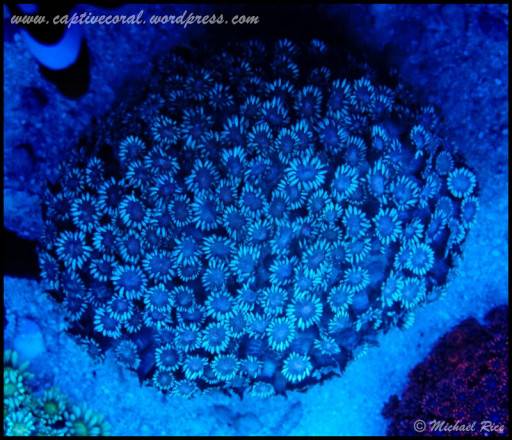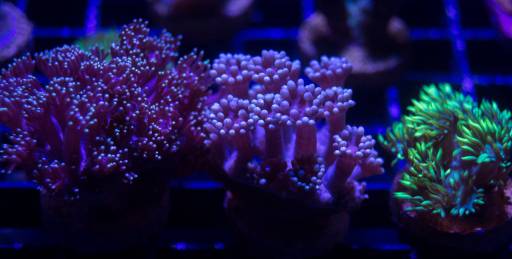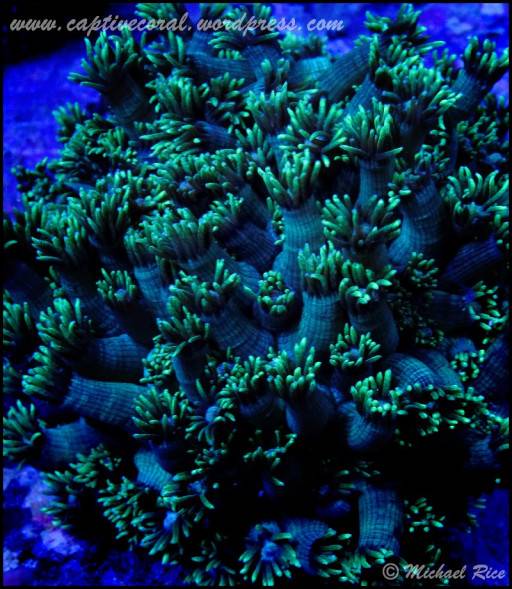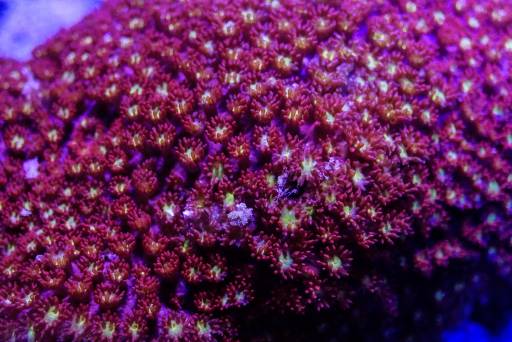Methodology:
The method I use for fragging the majority of hard corals is primarily the same with the cutting tooling being an Inland band saw.
Cooling liquid used is fresh mixed saltwater with enough iodine to color it a light amber. This helps to disinfect cuts as they’re made which has shown to greatly increase frag survival.
All corals are stored during cutting in a small bucket holding water taken directly from their home aquarium. This water is used both to keep them wet as well as for rinsing any flesh away from cuts while I’m working on them.
All finished, and rinsed, frags or trimmed colonies are soaked in Brightwell Aquatics Restor dip to insure that minimal flesh is lost.
Both soak buckets are rinsed and replenished between colonies to reduce the risk of interactions between loose flesh of different coral species.
Notes about Goniopora:
In order to keep goniopora colonies that I frag display worthy, I cut a thin slice directly from the bottom of the colony. This piece is fragged while the remainder of the colony can go back in a display, cut side down to grow back out.
Goniopora should be fragged with caution! Their skeleton may appear dense, but they are actually made up of tiny slivers. When cutting with tools that may throw waste material, be sure to cover all skin.
Learned that one the hard way!
I’m sure you would probably be better off if you could devise a way to miss all the polyps when cutting goniopora, but they still fair really well even if cut in half. For this reason, I make strait cuts and grow out the half heads later.
https://fragging101.wordpress.com/goniopora-fragging-101/
https://captivecoral.net/portfolio/goniopora/




Last edited by a moderator:



















